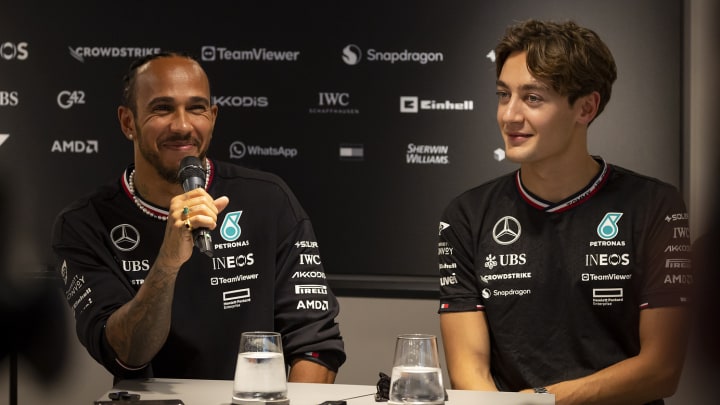F1 News: Mercedes on Upswing - 'We Didn't Stand a Chance Before'

The Mercedes Formula 1 team, after a rocky start to the 2024 season, is now showing signs of significant recovery and competitiveness thanks to pivotal improvements in their simulation technology after a series of car upgrades. The early part of the season saw the team grappling with issues that arose from discrepancies between their simulator predictions and actual track performance, leading to unexpected challenges during races.
Andrew Shovlin, Mercedes' trackside performance director, has played a crucial role in these improvements. He detailed how the team refined the accuracy of their simulator's correlation with real-world track conditions.
"I think we’ve got good correlation on the simulator now. So you treat each circuit separately in that regard."
Mercedes faced considerable hurdles earlier in the season when minor changes like temperature fluctuations and wind shifts led to significant balance issues - issues that hadn't reared their head in simulator work. Such discrepancies were detrimental as they hindered the team's ability to predict and ensure consistent performance. Shovlin emphasized the impact of these early issues:
"We didn’t stand a chance before, because if five degrees of track temp or a 30-degree rotation in the wind put you out of balance, it’s no surprise that the simulator was struggling to capture all of those effects."
However, the tide seems to have turned with successive and strategic developments to the Mercedes W15 race car.
"We’ve been bringing developments to the car, some of them mechanical, so we don’t need to declare those. But bringing a string of developments to the car so it’s a different thing every track we go to, that’s been the case for five or six races now," Shovlin elaborated. “The key thing is the correlation on the simulator has improved.
“We didn’t stand a chance before, because if five degrees of track temp or a 30-degree rotation in the wind put you out of balance, it’s no surprise that the simulator was struggling to capture all of those effects.”
The W15 has showcased improved versatility and performance due to these enhancements, adapting more efficiently to varied circuit demands – a factor crucial in competing effectively across the globe's diverse Grand Prix tracks.
Shovlin added: "When we had a car that inherently didn’t want to balance, you couldn’t get it working well around all the corners on a circuit, then it is just a difficult thing to deal with. Far beyond the correlation, we now have a car that works on high speed, low speed, mid speed, and braking’s OK."
The focus on continuously refining their simulation technology and car development strategy has been crucial. Shovlin pointed out the comparative ease of measuring the success of these improvements in real-time during the racing season.
"It’s a lot easier when you’re racing all the time and you’ve got data coming in to say, to confirm that the things you’re doing are actually making the car go quicker, which we can look at where we’re finishing, the gap to pole, and that’s matching what we’re finding on the sim, which is genuinely adding performance," he explained.
Looking ahead, the Mercedes team remains cognizant of the relentless competitive nature of the sport. Despite their progress, the necessity to evolve persistently to maintain and improve their position remains paramount, especially with the current grid being so competitive. "There’s always areas to improve, and you’ll always be chasing someone, or you certainly are most of the time. But it does seem to be that the improvements to the application are the thing that have also helped in that correlation exercise," Shovalin reflected.
